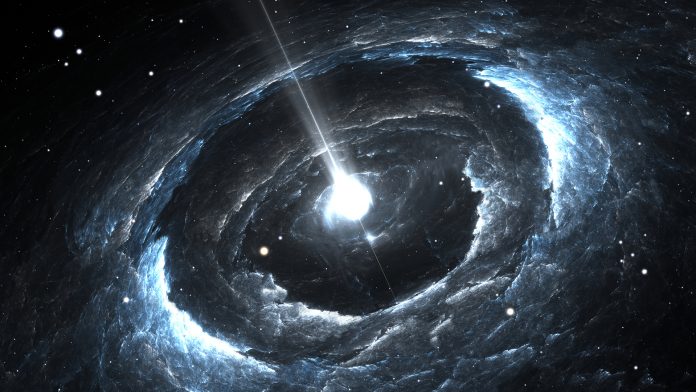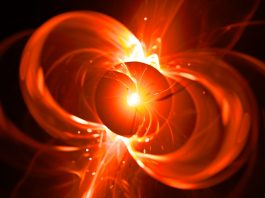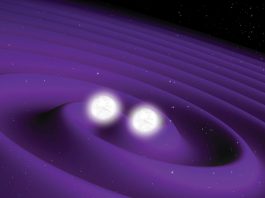A team of researchers at the University of Birmingham have created a new model for understanding the structure and composition of neutron stars.
The newly developed model suggests that researchers can directly measure the vibrations inside neutron stars from the gravitational wave signal alone.
This new research could allow asteroseismologists to develop promising new tools to probe the elusive nature of extremely dense nuclear matter.
The composition of neutron stars
Neutron stars are the ultradense remnants of collapsed massive stars. Despite these stars being positioned high on the electromagnetic spectrum, researchers still know very little about their nature.
By utilising the gravitational wave signal to measure the oscillations of the neutron stars, researchers will be able to discover new insights into the interior of these stars.
Dr Geraint Pratten, of the University of Birmingham’s Gravitational Wave Institute, is lead author of the study. He explained: “As the two stars spiral around each other, their shapes become distorted by the gravitational force exerted by their companion. This becomes more and more pronounced and leaves a unique imprint in the gravitational wave signal.
“The tidal forces acting on the neutron stars excite oscillations inside the star giving us insight into their internal structure. By measuring these oscillations from the gravitational-wave signal, we can extract information about the fundamental nature and composition of these mysterious objects that would otherwise be inaccessible.”
Innovating neutron star research
As published in Nature Communications, the model developed by the team enables the frequency of these oscillations to be determined directly from gravitational-wave measurements for the first time. The researchers used their model on the first observed gravitational-wave signal from a binary neutron star merger – GW170817.
Co-lead author, Dr Patricia Schmidt, added: “Almost three years after the first gravitational-waves from a binary neutron star were observed, we are still finding new ways to extract more information about them from the signals. The more information we can gather by developing ever more sophisticated theoretical models, the closer we will get to revealing the true nature of neutron stars.”
Next generation gravitational wave observatories planned for the 2030s, will be capable of detecting far more binary neutron stars and observing them in much greater detail than is currently possible.
“The information from this initial event was limited as there was quite a lot of background noise that made the signal difficult to isolate,” says Dr Pratten. “With more sophisticated instruments we can measure the frequencies of these oscillations much more precisely and this should start to yield some really interesting insights.”









